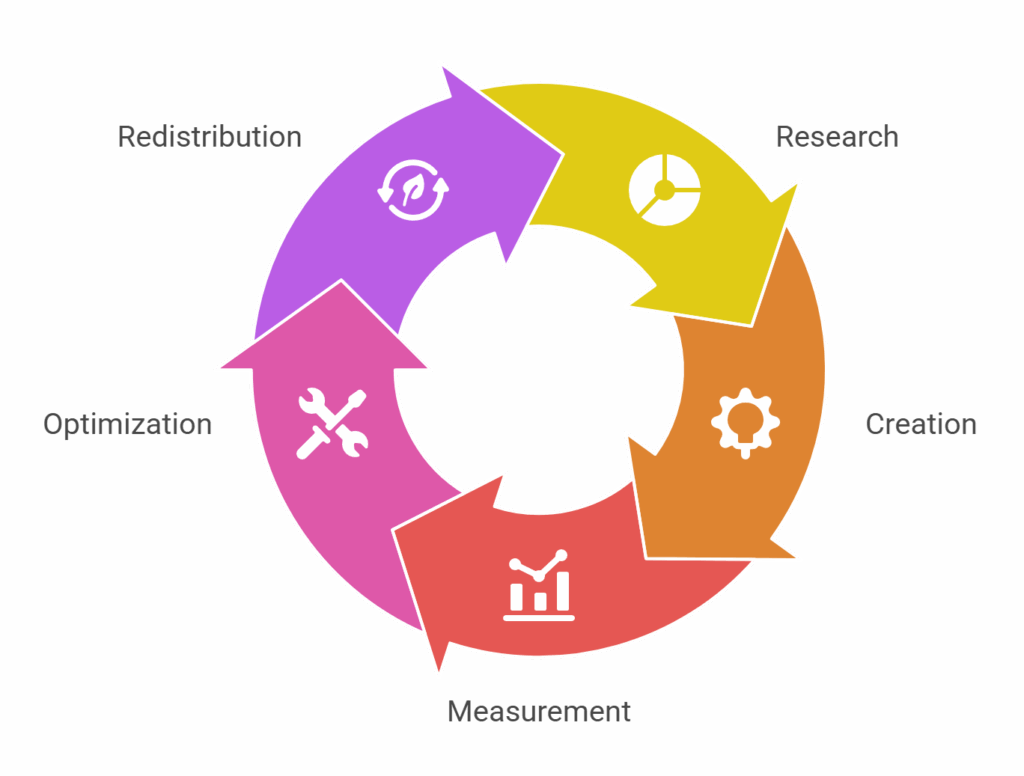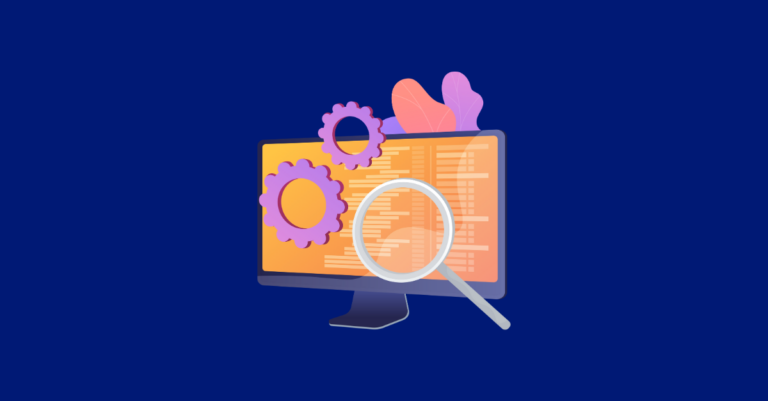SEO Growth Isn’t Always Linear: The Content Loop Concept
SEO performance rarely moves in a straight line. It compounds when you treat content like a living system — one that’s observed, measured, refined, and redeployed. Sometimes content strategies don’t fail because their tactics are bad; they fail because their content loop is broken.
In practice, that “living system” only stays alive if you manage its tempo, not just its tasks. Content relevance decays fast, so you need to treat cadence as a strategic input, not an afterthought.
If your SEO growth feels stuck, your content loop might be broken. Let’s rebuild it together.
For years, digital marketers have treated SEO like a predictable equation:
- Publish content
- Build links
- Climb rankings
- Repeat.
The assumption is that steady input equals steady growth. But SEO has never worked that way — and in 2025, it’s less linear than ever.
Most SEO roadmaps are still built on linear thinking: quarter-by-quarter forecasts, static keyword targets, and annual content calendars. However, that structure breaks down when the environment changes more rapidly than the plan.
Search visibility rises and falls because the ecosystem itself learns. Algorithms evolve. Competitors adapt. User behavior shifts. Growth doesn’t come from following a checklist. It comes from maintaining a loop — a system of observation, measurement, refinement, and redeployment.
Content loops create compounding effects. When conditions change faster than your iteration speed, the environment outruns your strategy.
SEO progress isn’t a staircase — it’s a feedback loop. Gains appear when insights from the last iteration inform the next. When the loop stops, so does growth.
Why It Matters Now
The modern search landscape is fragmented. Users discover brands through AI summaries, Reddit threads, YouTube clips, and snippets before ever clicking a link. Google and AI systems both reward freshness, clarity, and reinforcement. Static content fades fast; iterative ecosystems stay visible. Distribution has become algorithmic. Platforms are “discovery engines” with their own feedback: watch time, saves, comments, citations, embeds, etc. Your loop should learn from those signals and feed them back as optimizations.
Running a working loop keeps you in the signal. It ensures your content evolves alongside the algorithms and audiences. Treat each platform as a lab. What wins in Shorts or Reddit threads can harden your page’s POV, headings, and examples. Discovery informs search, not just the other way around.
What Is The Content Loop
I describe the content loop as a continuous cycle:
Research → Create → Measure → Optimize → Redistribute.

Each rotation strengthens the next:
- Research exposes new opportunities through data and behavior.
- Creation turns insights into pages, assets, and campaigns.
- Measurement reveals what truly resonated.
- Optimization sharpens relevance and experience.
- Redistribution breathes new life into proven material.
Most organizations complete the first two steps and stop there. The feedback portion — where real learning occurs — never concludes.
Add two operational layers: (1) Cadence — how often each asset is reviewed, and (2) Propagation — how insights travel across related pages, internal links, and formats. A single improvement should cascade through the cluster, not remain isolated.
Where the Loop Breaks
The most common breakdowns we see:
- No feedback layer. Analytics, content, and SEO teams often operate in silos, each reporting on different KPIs and never closing the communication gap. Insights that should inform new content — like which queries actually convert or which formats retain users — get buried in dashboards no one shares. The result is activity without alignment, and strategies that never evolve beyond the first draft.
- One-and-done mindset. Too many teams still treat publishing as the finish line instead of the starting point for learning. A post goes live, traffic gets checked once, and the content is left untouched even as intent, competitors, and algorithms shift. Without iteration, every piece of content has a built-in expiration date.
- Traffic obsession. A spike in traffic from irrelevant queries can look like success on paper while contributing nothing to leads, sales, or retention. When the measurement stops at the click, the strategy loses sight of what actually drives revenue.
The result is diminishing returns. Content piles up but doesn’t compound. And a big one: Content debt. Outdated, duplicative, or thin pages tax crawl budget, dilute entity clarity, and confuse both users and models. Unpaid debt compounds and slows every future iteration.
Finally, misaligned incentives. Teams are rewarded for volume shipped, not impact learned. Loops die when success = “published” instead of “improved outcome.”
How to Rebuild It
Rebuilding a functioning content loop means putting a process around iteration:
- Define measurable checkpoints. Every loop needs benchmarks that reflect both visibility and business impact. Track rank lift, CTR, engagement depth, conversions, and assisted revenue — not vanity metrics. Add discovery metrics by channel: saves, mentions, unlinked brand citations, AI overview citations, and forum upvotes. These are upstream signals that predict search lift.
- Feed PPC and SEO data into the same loop. AI search has blurred the lines between paid and organic signals, so your campaigns shouldn’t operate in separate silos. Paid search data surfaces keyword and message intent almost instantly. Use that intel to guide long-term SEO decisions.
- Refresh content quarterly. AI-generated results favor freshness and factual consistency. Revisit every asset with updated data, improved structure, and clearer formatting. Re-optimize for conversational and generative search phrasing, tighten internal linking, and ensure the content still satisfies the searcher’s why, not just the what. Create a recurrence policy: Tier A pages (money pages) reviewed every 60–90 days; Tier B every 120–180; Tier C annually or sunset.
- Retire what underperforms. Outdated or irrelevant pages don’t just sit idle — they erode topical authority and confuse search models. Use analytics and AI-driven content scoring to identify weak performers, then merge, redirect, or remove them. Every cleanup sharpens your content signal. Make “merge vs. 410 vs. redirect” a quarterly ceremony. Reducing index bloat is an acquisition strategy, not just housekeeping.
- Redistribute wins. When a piece performs well, amplify it. Repurpose proven content into short-form posts, newsletters, webinars, or paid campaigns to multiply touchpoints. Train AI summarizers or writing tools on those top assets to create derivative pieces that maintain tone and context. The best loops don’t just recycle — they evolve. Treat each redistribution as an experiment: change hook, format, and proof. Record the best-performing variants and feed them back into the canonical page.
- Leverage automation, not autopilot. AI can accelerate research, clustering, and scoring — but it can’t replace strategy. Use it to handle the grunt work, such as surfacing anomalies, summarizing performance, or forecasting trends. Keep humans in charge of interpretation, prioritization, and storytelling. The loop only works when technology amplifies insight, not replaces it.
The loop is a mindset, not a toolset. The question after publishing shouldn’t be “what’s next?” but “what did we learn?”
The Greenlane Approach
At Greenlane, we build SEO and content programs around loops, not lines. Our teams collaborate across SEO, PPC, analytics, and UX, so data doesn’t die in a report — it fuels the next round of improvement. Can our SEO and content team help you? Reach out today.







